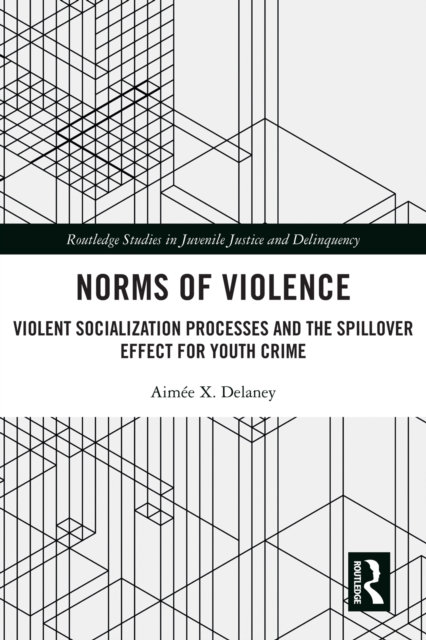
Norms of Violence : Violent Socialization Processes and the Spillover Effect for Youth Crime PDF
by Aimee X. Delaney
Part of the Routledge Studies in Juvenile Justice and Delinquency series
Description
Norms of Violence: Violent Socialization Processes and the Spillover Effect for Youth Crime explores the degree to which violent socialization processes, both at the macro- and micro-levels, are associated with youth criminal behavior. Based on a quantitative test of an integrated theory of social control and culture of violence, the author argues that violent socialization is a process involving physical violence, exposure to violence, and pro-violent communications. All three dimensions, in combination with national level indicators of violence, contribute to a norm of violence which, at a national-level, spills over into other dimensions of society, including the family environment.
This book seeks to answer if violent socialization processes truly control youth behavior. Various quantitative methods are used to demonstrate how violent socialization tends to be more prevalent in nations with indicators of violence compared to nations without such indicators. The spilling over of violence into socialization processes creates a context of violence normalized as a form of social control, which exacerbates youth criminal behavior within pro-violent nations.
This book is unique in propelling a more thorough explanation of international youth crime by focusing on both victimization (violent socialization) and offending, rather than arguing solely that victimization is a correlate of youth crime. It provides a reference point for future comparative research offering theoretical explanations for youth crime across different nations and is essential reading for those engaged in youth and juvenile justice efforts and scholars interested in issues surrounding violence, youth, and justice.
Information
-
Download - Immediately Available
- Format:PDF
- Pages:156 pages
- Publisher:Taylor & Francis
- Publication Date:29/03/2021
- Category:
- ISBN:9781000357004
Other Formats
- Paperback / softback from £37.75
- EPUB from £34.19
- Hardback from £135.00
Information
-
Download - Immediately Available
- Format:PDF
- Pages:156 pages
- Publisher:Taylor & Francis
- Publication Date:29/03/2021
- Category:
- ISBN:9781000357004










